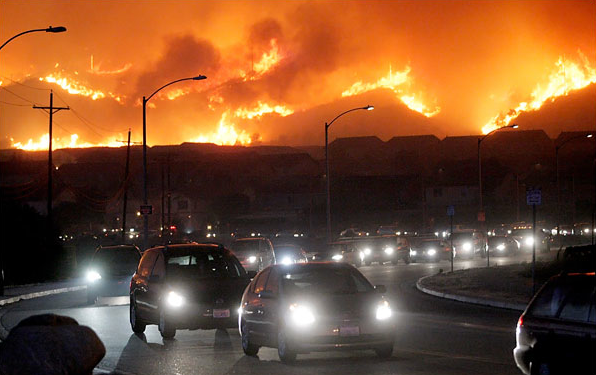California wildfires are raging and the news media seem to have found the culprit: global warming. At least that’s the impression one gets when reading the articles, which cite the impact of global warming and then quote experts who confirm the global-warming thesis.
Videos By Rare
Look more closely, though, and you will likely see a passing reference to humans playing a direct role in starting the fires.
Then the story returns to global warming.
The average reader’s takeaway is that global warming—or the term du jour, “climate change,” since there hasn’t been any warming in 16 years—is the primary force behind the forest fires and that humans are the cause.
The real story is less interesting, and doesn’t fit a “looming eco-disaster” narrative.
Lynn Tolmachoff, a spokesperson for Calfire, California’s Department of Forestry and Fire Protection, says, “95 percent of the fires in California are human-caused,” according to a recent story in Voices of San Diego.
The human causes are such things as debris burning, power lines, campfires, accidents and arson. None of those human-related causes are a result of global warming.
Of course, California has been in a drought for several years, exacerbating the challenge of putting out the fires. Is global warming responsible for the draught? The news stories imply that it is.
But California has seen many severe droughts over the decades, long before environmentalists jumped on the global-warming bandwagon.
The good news is the current draught may be coming to an end. Scientists have detected an El Niño developing in the Pacific Ocean. El Niños tend to bring increased rainfall, sometimes heavy, to the Southwest, from California to Texas. This ocean pattern occurs every five to seven years or so. But it has been a while, 1997, since there has been a strong El Niño.
However, the forces behind El Niños, as well as other ocean oscillations, which include the Pacific Decadal Oscillation (PDO) and the Atlantic Multi-Decadal Oscillation (AMO), are not well understood by scientists.
But while the drought certainly exacerbates the fire-spreading problem, so can forest management practices. As Robert H. Nelson, a professor of environmental policy at the University of Maryland, wrote in January in the Wall Street Journal:
“During the 1990s, the Forest Service’s old philosophy of ‘multiple use management’ of forests was succeeded by a new outlook of ‘ecosystem management.’ This placed ecological goals above more utilitarian considerations, resulting in a radical curtailing of timber harvesting, forest thinning and other more aggressive actions that would have helped to address the continuing fire problem.”
Leaving dead trees and brush in the forests provides more fuel for the fires, making them much worse.
Thus, news stories covering the forest fires should stress that the vast majority of them are caused by humans, not global warming; that they are burning faster and hotter because of human forest management policies, not global warming; and that the land is drier because we are at the end of a dormant El Niño cycle that may finally be forming once again.
But then it’s easier, takes less investigative time, and more politically correct to say global warming did it.

